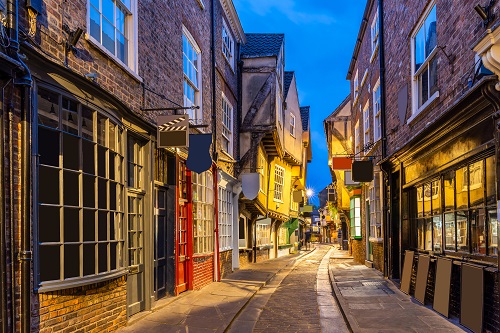
If you start to plan a trip to europe and want to visit historical places, certain places appear in pretty much all the suggestions you will get. And sure, cities like London or Amsterdam are great places for history fans to visit. But how about enjoying some places that are not included in every vacation brochure? Here are seven rather little-known historical places to visit in Europe:
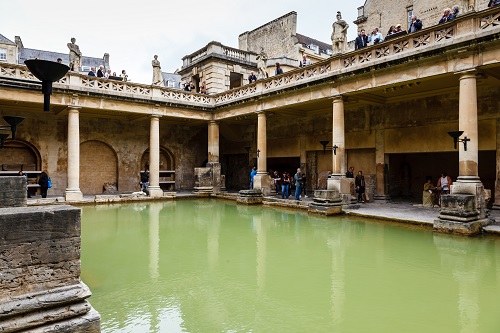
1.) Bath, England
Bath is a city in the southwest of England with a very special history.
It is home to the only hot springs in the whole of England. This fact aroused the interest of the Romans almost 2000 years ago. And they too merely took over these hot springs. They built a Roman bathhouse that is almost completely preserved. This gives you a unique insight into Roman bathing culture in England.
Over the centuries, Bath became a popular health resort and its waters were said to have healing powers. Some of England's wealthy citizens had villas built and the city became so important that it was at times the eighth largest city in England. Wander the streets between Gregorian buildings or relax on a stroll through one of several beautiful parks. Bath Abbey, with its varied history and gothic architecture, is definitely worth a visit.
There are also a number of interesting museums. The Herschel Museum of Astronomy, for example, shows a lot about the life of the discoverer of Uranus through his house, including a small workshop. Or are you more interested in the Jane Austen Centre, which illustrates the role Bath played in the author's life and thus in her works? Also worth a visit is the Holburne Museum in Sydney Gardens with its collections of coins, glass, porcelain, furnishings and Old Master paintings. Some pieces in this collection are even of Roman origin, but Chinese porcelain has also found its way here.
As you can see, Bath is a perfect destination for a relaxing and historical holiday.
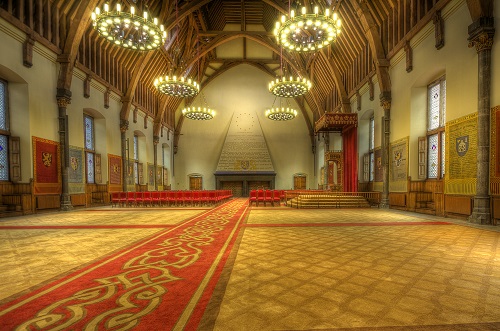
2.) The Hague, Netherlands
The first castle was built on the site of today's The Hague as early as 1245 AD. Part of this was the famous Knights' Hall, where today the King opens Parliament every year. The Hague first became the seat of the count and then, from 1648, the residence of the governors of the Republic of the Seven United Provinces. The Hague was plundered and burned down several times during the Eighty Years' War, partly due to the lack of a city wall. Afterwards, the city became more and more established as a seat of government and experienced more than 300 years of peace, despite the end of the Dutch Republic, French occupation and the revival of the monarchy.
Accordingly, many buildings from the last centuries are well preserved and are still in use today. One example is the Kloosterkerk, which was built as a Dominican monastery church in the Gothic style. Although it has served other purposes in the meantime, it has been a place of worship again since 1617. Today, the Kloosterkerk is regularly visited by the royal family for services.
By the way, a visit to the Grote Kerk is highly recommended; it is available for fairs, exhibitions and other events and is also open to tourists. In addition to the breathtaking architecture, you will find several tombstones of historical personalities, as well as the coat of arms of the Knights of the Order of the Golden Fleece.
In a city famous for its international courts, a museum dedicated to the administration of justice is a must. The Museum of City History and Jurisprudence, housed in the Gevangenpoort, displays historical paintings and writings, as well as torture devices in the former cells.
All in all, The Hague is the place to visit if you are interested in history, its politics and its jurisprudence.
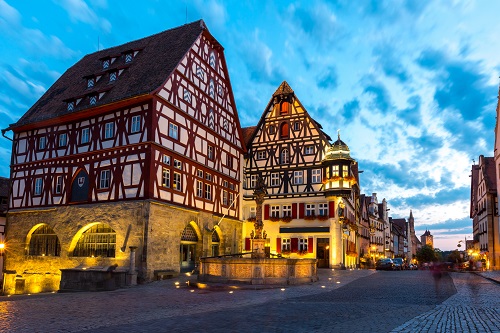
3.) Rotenburg ob der Tauber, Germany
The relatively small town of Rothenburg ob der Tauber already inspired painters in the 19th century and attracted tourists at the beginning of the 20th century. The reason for this is the fact that the townscape has hardly changed for centuries. Even the few new buildings that were necessary after the Second World War were carefully adapted to the old image and are hardly noticeable at first glance. The result is a city in which you can almost lose yourself in the Middle Ages as you explore it.
The two defence rings of the city are almost completely preserved. These include the city walls and various towers and gates.
While most of the buildings date from the 15th-17th centuries, some date back to the 11th century. The beautiful Tauber valley, makes the historical as well as the picturesque impression perfect.
As a history buff, you can quench your thirst for knowledge in several places.
The Medieval Criminal Museum in Rothenburg ob der Tauber focuses on medieval criminal proceedings from the investigation to the execution of punishment. But overall, the museum offers deep insights into more than 1,000 years of judicial history.
Anyone interested in the history of this now unique town should also visit the Rothenburg Museum. It is located in the former Dominican monastery, which was founded in the 13th century. The preserved monastery kitchen gives you an impression of life in those days. It also shows a lot about the art, culture and crafts of the historic town.
Have you ever wondered what life was like for craftsmen in past centuries? Then take a look at the Alt-Rothenburger Handwerkerhaus, a small museum that shows the life of craftsmen's families in eleven rooms.

4.) York, England
York is also called the eternal city, in fact its history goes back to antiquity. The Romans established a military camp in 71 AD, which was easily defended by the then marshy areas around the rivers Foss and Ouse. It gradually became their most important military base in northern Britain. It was here that Constantine the Great was even proclaimed emperor by his father's troops. The foundations of the Roman legionary fortress headquarters have been rediscovered under York Minster. The excavations there can be visited.
The Middle Ages, when Christianity finally prevailed, still leave their mark on the city today. The 20 parish churches alone, which are at least partially preserved, bear witness to this. But the most impressive work of medieval architecture is York Minster. It is the second largest Gothic church in Northern Europe and took 250 years to build.
Also explore the Snickleways, which are late medieval alleyways, one of which, called Shambles, will particularly capture your attention as the medieval appearance has been preserved and reconstructed as much as possible. Cafés, restaurants and small shops invite you to linger.
York's medieval walls have been reconstructed where they were no longer intact, giving you a glimpse of the city's defences at the time. So how about a little stroll?
Various museums with a historical focus offer history buffs a varied selection. Early history, including the Roman period, is covered in the Yorkshire Museum, and you can learn the most about the Vinkings in the Jorvic Vinkings Centre. While those interested in the Wars of the Roses should definitely visit the Richard III Museum, where his life from his early years to his death is illuminated. There is also much to learn about the decisive battles between the House of Lancaster and the House of York. A second museum of this kind in York revolves around the life of Henry VII Museum.
Another treat for history buffs is Barley Hall, a lavishly restored building that is now a museum with changing exhibitions of great historical interest.
If all that didn't convince you to visit York, the other attractions probably won't either. From my point of view, however, York belongs very high on the list of desired destinations for anyone interested in English history.
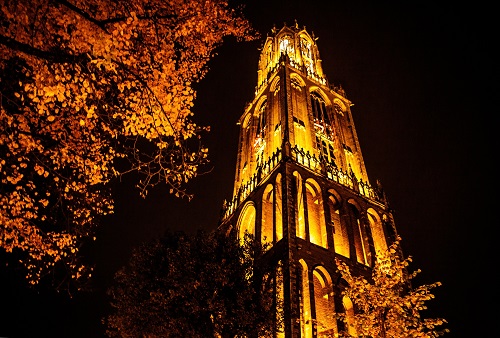
5.) Utrecht, Netherlands
An insider tip for history fans travelling to the Netherlands is Utrecht. The city has some very interesting stories to tell that are at best only touched upon elsewhere.
One example is the local church history, which not only began very early, but also took some unexpected turns. Silent witnesses are numerous time-honoured churches. In St. Catherine's Cathedral there is a museum on Dutch church history that lets you delve deeper into the turmoil of church politics. The cathedral itself is also a feast for the eyes that you should not miss. The oldest surviving churches in the city date back to the 11th and 12th centuries and thus truly from the Middle Ages.
Utrecht is also home to the oldest city museum in the Netherlands. The Centraal Museum Utrecht offers you a wide range of art exhibits in the rooms of a medieval monastery. This includes works by Old Masters as well as contemporary art and modern art. At the same time, it is also a local history museum where you can learn more about the history of Utrecht.
There is a castle to marvel at in the immediate vicinity of Utrecht in the small town of Haarzuilens. The Kasteel de Haar was built on the basis of ruins whose origins are thought to date back to the late Middle Ages. You will also be enchanted by the rich interior decoration, most of which was planned for the reconstruction and is thus precisely tailored to the premises. The castle is surrounded by a moat and an elaborately landscaped park containing various themed gardens. The perfect destination for an equally great and relaxing end to a trip, isn't it?
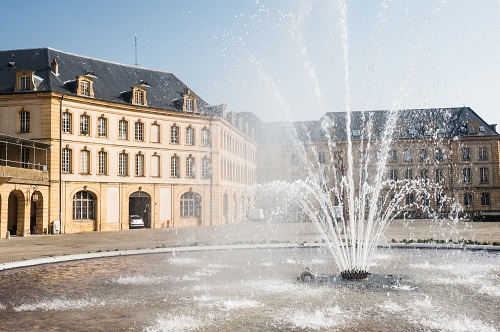
6.) Metz, France
The French city of Metz looks back on a long history in which the significance of the city, as well as the identity of its inhabitants, has been put to the test several times.
The town itself has been inhabited since around 3000 BC and was conquered by the Romans in 52 BC. The first Christian communities were founded in the 4th century AD. Metz and its surroundings gave birth to the Carolingians, whose most famous representative was Charlemagne. It also became a stronghold of the Christian faith early on. Monasteries and churches shaped the cityscape throughout the Middle Ages. The oldest ecclesiastical building in France, St-Pierre-aux-Nonnains, still stands in the centre of Metz. The oldest part of the church dates back to the 4th century. A small Templar chapel from the 12th century commemorates the Knights Templar. While many of the once ecclesiastical buildings now serve other purposes, Saint-Étienne Cathedral still fulfils its original purpose today. Its enormous painted glass windows even earned it the nickname "The Lantern of the Dear God". As one of the largest and most beautiful Gothic churches in France, it is well worth a visit.
Although Metz was also a military position as early as Roman times, it became more and more of a fortified city after the Middle Ages. Reconstructions became necessary again and again, which led to numerous demolitions, conversions and relocations of buildings. Today, all that remains of the medieval city fortifications is a largely demolished fragment of wall and the so-called German Gate. But what role did Metz itself play in all the wars from which walls protected the city? Where did the dangers come from and why? Answers to these questions can be found in the Museum of the City of Metz. It also deals in detail with the Middle Ages in this region, as well as the ancient finds. Follow the history of the city, find out where many members of Charlemagne's family were buried or what linked the Catholic city to the Protestant princes of Germany 500 years ago.
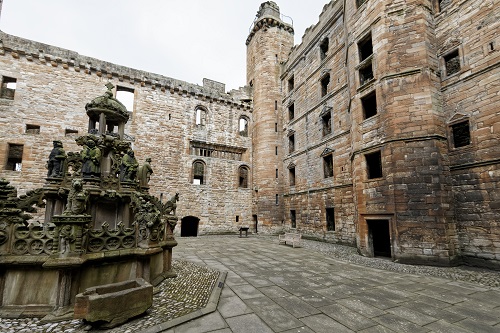
7.) Linlithgow, Scotland
Like many ancient towns, it was the good position, coupled with the most basic necessities of life, that gave rise to the village of Linlithgow. While the town was named after the lake, which was settled early on, the origin of its unusual coat of arms is obscure.
In the Middle Ages, the importance of Linlithgow grew due to the Scottish monarchs who regularly stopped here on their way between Edinburgh and Stirling. In 1388 it was granted town charter by Robert II of Scotland. However, it was particularly the place where the Scottish monarchs established their main residence. This is how the city's most famous landmark, Linlithgow Palace, came into being. Today, the enormous ruins welcome visitors from all over the world and allow them to experience the Middle Ages. The beautiful landscape around the birthplace of Mary Stuart, Queen of Scots and James V, makes the modern world around you fade away.
Of course, there is more to see in Linlithgow. St. Michael's Church is also very close to Linlithgow Palace. It dates from the 15th century and was particularly frequented by the Scottish monarchs. It is also open to visitors during the summer months. So you can get an impression of the place where Mary Stuart was baptised.
Walk along High Street, where medieval houses still follow the original route of this road, and find the place where James Stewart, first Earl of Moray was murdered. The
Linlithgow Museum is dedicated to the town's history, Mary Stuart and civic life in the town.Here you will find all the background information that will help you immerse yourself in history as you explore the unique city of Linlithgow.
Pin for later!



